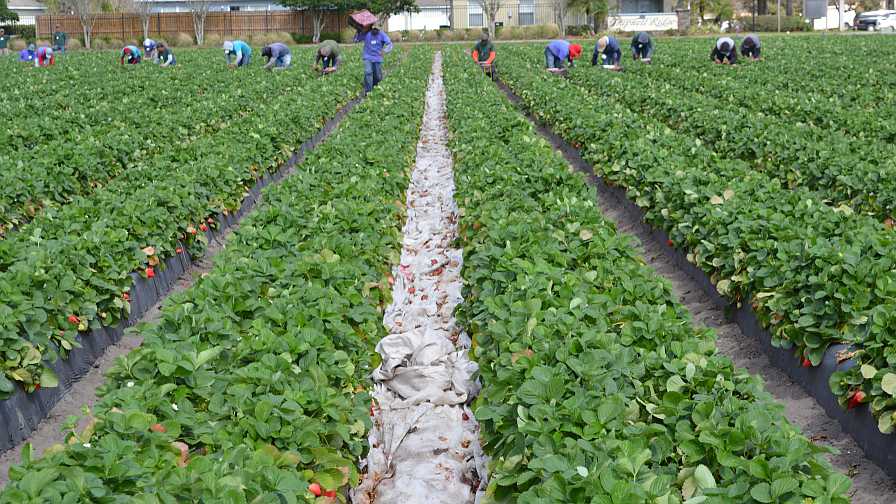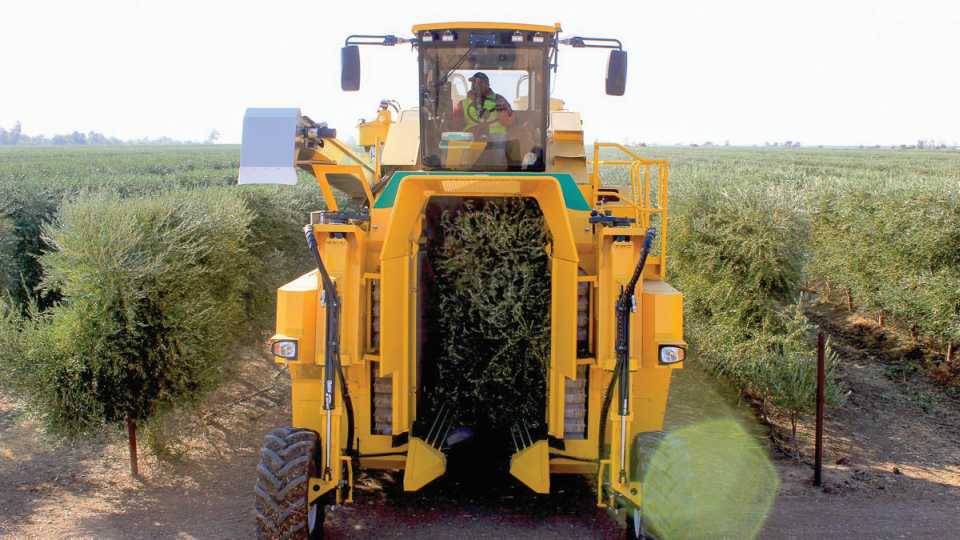Ag Technology Moving Quick To Merge the Field With Machines

Ag tech capabilities continue to grow. Modern data management and recordkeeping software platforms allow planting schedulers to automate planning for task associated around planting through harvest to ensure a smooth flow of product.
Photo by Frank Giles
Five prominent Florida-based farming operations were represented in a panel discussion during the virtual UF/IFAS Ag Tech Expo in May. Jamie Williams, Director of Operations of Lipman Family Farms; Chuck Obern, owner of C&B Farms; Paul Meador, owner of Everglades Harvesting; Charlie Lucas, President of King Ranch (Consolidated Citrus); and Ken McDuffie, Senior Vice President of Sugarcane Operations for U.S. Sugar, all shared how they are using technology and see its role in their respective operations.
Precise Production
These farms have had their feet in the ag-tech game the longest using tools related to production. Most are grid sampling their fields for fertilizer applications and using soil moisture probes and weather stations to be more precise and effective with irrigation scheduling.
“We have been doing GPS soil sampling for about 10 years now,” Obern noted. “We have GPS rate controllers on our fumigation rigs, fertilizer applicators, and sprayers. We have weather stations on every farm that gives us live conditions whenever we want to access it.”
Lucas noted the financial and environmental benefits of more precise application at King Ranch.
“I think the Tree-See technology that has been around a long time was a big breakthrough for citrus,” he said. “We use it in multiple applications whether it be spraying, soil drench, or fertilizer application. We have seen about 20% reduction in materials applied with Tree-See. That’s not only a benefit on savings on inputs, but there’s less impact on the environment.
“Right now, we also are working with a lidar-laser technology on a couple of sprayers. They will not only detect tree size, but also tree density. Detecting the density will allow for adjusting the application quantity. We are hopeful based on some initial work that we might achieve another 20% to 30% savings. You add those two technologies together, and we might see a 40% to 50% savings. That’s huge.”
Over at Lipman, GPS also has been used to guide applications.
“We use GPS reference for all our bug sprays to be able to identify how bad they are and where they are,” Williams said.
Predictive Insights
The panelists all noted they see great promise in the collection and management of data over the long-term to improve sustainability and the ability to make smarter decisions on the farm.
C&B Farms has been implementing these types of technologies since the early 2000s. It has built layers of information that has allowed them to become much sophisticated in planning and execution of the 30+ specialty crops grown on the farm.
The farm uses data to look at each field and determine what expected inputs will be and what yields are projected per acre/per week. Then they match that up with what they sell to their customers. Based on that information, their software management program builds a planting schedule to ensure a steady flow of products in demand during the harvest window.
“Once we have our map of where we are planting and when, we have a [software] task manager that spits out the jobs for each production function like disking, bedding, fertilizer, herbicide, seeding, irrigation, etc. It is all automated.”
Williams noted that data can provide insights down to the row level as layer-on-layer of information is collected year-after-year.
“One of the things we keyed in on a decade ago is the idea technology would launch us into the future by gathering information in large quantities and using it to predictively model fertility rates, yield outcomes, labor needs, etc.” he said. “Anything we could do to stay on the cutting edge through technology.”
Lipman utilizes the CropTrak platform that is an integrated recordkeeping system that collects data on just about every function on the farm. In fields, all the data Lipman is generating is GPS referenced. Williams noted that every row has a number and performance of some have been tracked for a decade. That data can then be mined through artificial intelligence (AI) to evaluate how well the farm is performing or expected to perform.
“We ran some models a few months ago and found our ability to project farm yield outcomes was not as good as the AI when you plug in all the historical data on weather, blocks, and varieties, etc.,” Williams said. “That ties back to our sales and gives us some sense of security of what kind of returns we can expect during the season. We know there’s going to be blips along the way, but to be able to recognize them and get out ahead of them to stop gluts in production is great tool.”

Paul Meador of Everglades Harvesting suggest at some point the citrus industry may consider a grove architecture that would all for over-the-top harvest of citrus to reduce labor and lower costs.
Photo courtesy of Oxbo International
Labor and Productivity
Another area the panelists see for the promise of ag technology is labor recordkeeping. That’s particularly important in a state that is increasingly relying on H-2A labor where recordkeeping requirements are high. But there are other benefits in being able to monitor labor productivity on the farm, which many of the current software platforms allow.
U.S. Sugar covers a lot of acres and employs a lot of people. The company has invested in software development to manage its workforce. The system even monitors equipment performance. It allows the company to be proactive with maintenance of tractors and harvesters to avoid downtime for repairs during critical production windows.
“Recently, we have implemented what we call Operational Excellence,” McDuffie noted. “The system monitors our machine health and operator productivity, and all time-keeping efforts.”
Automation and Logistics
Lack of labor and its costs loom large as two of the biggest challenges growers face these days. It is forcing them to look for ways to reduce workforce demands. Ag tech has a way to go but is catching up.
While mechanical harvest of citrus hit a roadblock when HLB came, and after the hurricanes of the mid-2000s, it is getting another look today.
“Unfortunately, there’s not any mechanical harvesting being done in Florida right now, but that technology exists in other tree crops like coffee and olives using trellis and over-the-row harvesters. I believe at some point our citrus industry will start to look at grove architecture, new rootstocks, and technology that might enable that type of harvester here,” Meador said.
King Ranch has recently invested in the Global Unmanned Spray System (GUSS). The autonomous robot maneuvers through groves using lidar vision, reducing the need for human operators. One human can operate four machines with a laptop from the cab of his or her pickup.

GUSS’s low front profile was designed to drive easily in the orchard, with branches flowing over top of the sprayer. (Photo by David Eddy)
“With this technology, we can reduce the need for 12 tractors and 12 sprayers down to four GUSS units,” Lucas noted. “We will be able to reduce our head count by eight people and cover a lot more acres because we can run the machine all the time. Right now, it is going to just be spraying, but we are hoping we can add jobs like herbicide applications and mowing. It is not a cheap system, but we know the labor situation and are willing to invest even if there’s not an immediate payback. We are pretty excited about the technology.”
Traceability
Food safety and traceability has become paramount in daily, even hourly operations of specialty crop farms. C&B Farms recently installed a new barcode system capable of tracking the labor harvesting and packing the items — down to the field level. Not only is that useful for food safety, it also is applied to the piece-work rates for harvest labor.
“We have tablets and printers in the field,” Obern noted. “We print the sticker in the field. Information is communicated from the office to the field and the stickers are assigned a PTI (Produce Traceability Initiative) number.
“We even track our produce shipments to our customers. We have GPS temperature trackers in our shipments that gives us live information every 10 minutes [on location and produce cooling] and lets our customers know how their load is making its way to them.”
Competitive Pressures
While agricultural technology comes with a learning curve and an expense, the panelists agreed it will be necessary in the competitive landscape in which their farms are growing. The ability to gain efficiencies in production, reduce labor, and improve the productivity of labor on the farm will be critical going forward.
“We have to figure out ways to compete with foreign competitors,” Obern noted. “They are not going to change and will keep coming. They have much lower costs than ours, so we must adopt technology that improves our efficiency and reduces our costs.”
Obstacles to Adoption
While the growers on the UF/IFAS Ag Tech Expo panel are big believers in the adoption and promise of agricultural technology, they acknowledged there are challenges with its implementation. Here are a few they outlined.
- The costs of entry: Many of the available technologies are expensive and often don’t provide a quick payback on investment.
- It’s complicated: For most growers, computers and software are complicated to learn and operate. Then there are employees who must be trained to use technology effectively.
- Integration of platforms: Farms that utilize multiple platforms often have difficulty integrating systems to operate efficiently.
- Glitches: Just like with any computer system, there are glitches in agricultural technologies, and it is frustrating. And there’s often a shortage of trained technicians to fix the problem.
- So much to choose from: All the growers reported they are being bombarded by many technology providers pitching their solutions. There’s just not enough time or money to evaluate it all.
- Connectivity: In areas with poor connectivity and internet service, it can be difficult to operate systems.










